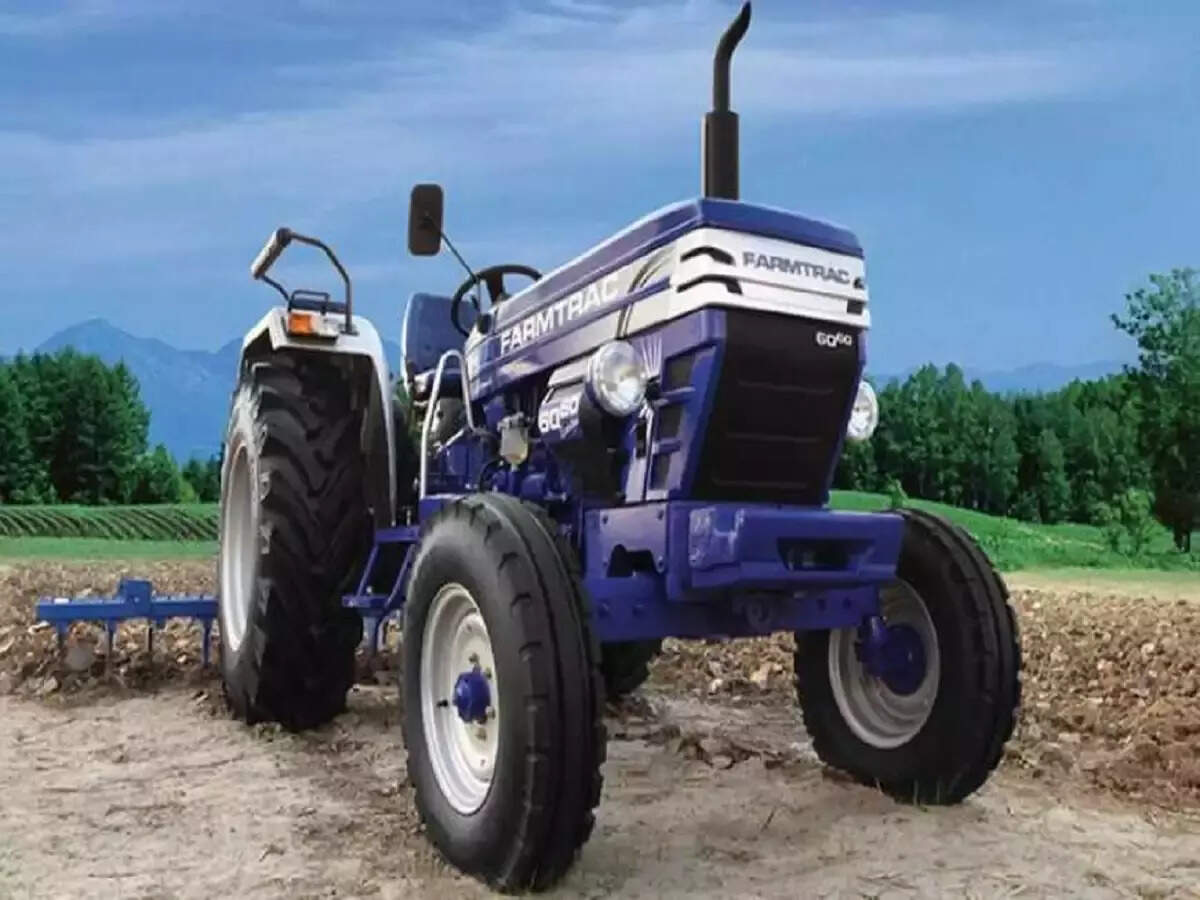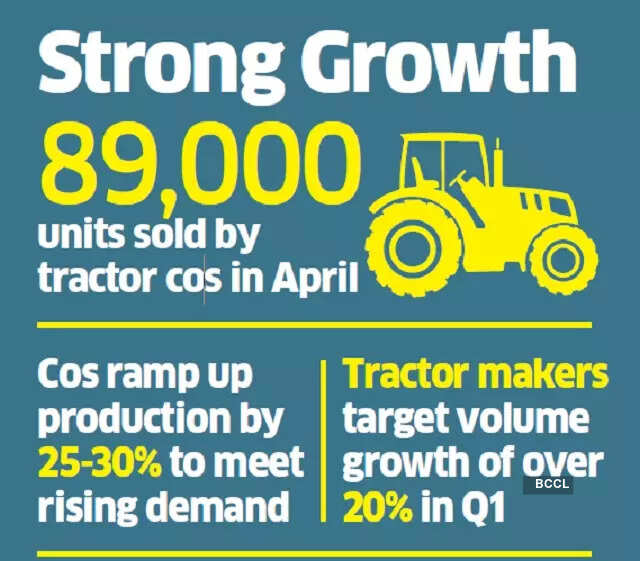
Tractor sales in India picked up to a record in April, snapping months of decline, as higher cash flow from healthy rabi crops made it easier for farmers to purchase farm equipment.
Sales in April grew by 41% from a year ago after posting a decline for five months in a row.
Hemant Sikka, president of farm equipment business at Mahindra & Mahindra, told ET that April of 2022 was the best-ever April in the history of the tractor industry with over 89,000 units sold, a new benchmark for this period compared with the previous high of around 66,700 units in April 2019.
Tractor manufacturers expect this momentum to sustain and are ramping up their monthly production schedules by 25-30% for the next two months to meet this demand.
A senior executive of a supplier to tractor makers said that May production schedules are 30% higher than April’s and 50% higher than March’s, underlining the preparedness on part of companies to be ready to serve higher demand.
Mahindra & Mahindra’s Sikka expects the momentum to continue to benefit both the tractor and rural segment, with demand drivers staying on course.
“Rabi harvesting has progressed well across markets. Amidst the ongoing global situation and high exports of wheat from India, demand for Indian wheat crop has been very high leading to farmers receiving higher prices for the crop in the open market over MSP,” he said. “Oilseeds too are fetching higher prices in the domestic market.”
The tentative production schedules of tractors makers in the current quarter suggest that farm equipment companies are targeting volume growth of more than 20%. A strong start to the year would mean the overall tractor market could potentially grow by 4-6% after a 6% drop witnessed in FY22, according to analysts.
Tractor industry volume had dropped by 6.3% to 842,000 units in FY22, after growing by 26% in FY21.
Industry players said the expectation of a normal monsoon bodes well for the upcoming Kharif season.
In addition to demand remaining buoyant, the supply situation eased during FY22, as raw material and labour shortage, which had crippled the industry in the previous year, saw normalisation.
“Revival in demand from the commercial segment in FY22, which was tepid during the previous year, is also likely to benefit commercial demand for tractors, with increase in allocation of the government’s budget on infrastructure and rural development,” said Sikka.
M&M sold 39,405 tractors in the domestic market in April 2022, an increase of 51% from the year-ago month.
Lower channel inventory helped ramp up inventory for the season. Industry-wide inventory rose to 35-45 days at the end of April 2022, compared with less than 25 days at the end of March 2022.
Agri-machinery maker Escorts, in a post earnings call, guided for a strong first half for the tractor industry led by higher market prices of wheat and other food grains.
Cash flow for farmers in the last two months improved with better realisation from rabi crops, mainly wheat, barley and small millets. The minimum support prices of wheat and paddy have seen an increase of Rs 40 and Rs 72, respectively, over the previous year’s levels.
The average price of wheat in the domestic market has increased by 8% in the last six months, well above the minimum support price. Consequently, farmers have increased allocation to sell in the direct market rather than through the government route.
“In the tractor industry, recovery has set in and volume-wise the outlook is positive this fiscal,” Bharat Madan, Group CFO at Escorts Limited, told ET. “Commodity prices too seem to have peaked in May. Though it will take 3-4 quarters to recover the increase in input costs due to lag effect.”
Tractor sales account for 70-72% of Escorts’ revenue. Tractor prices have gone up by 12-15% in the last 18 months on the back of a sharp rise in the cost of commodities.


















